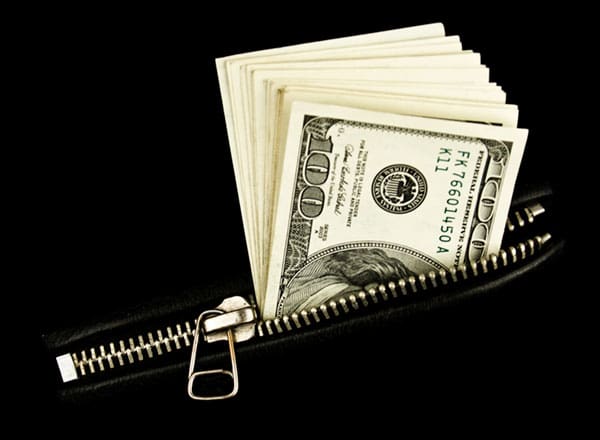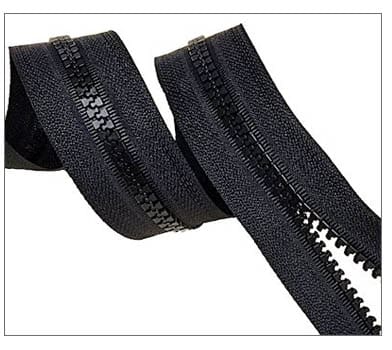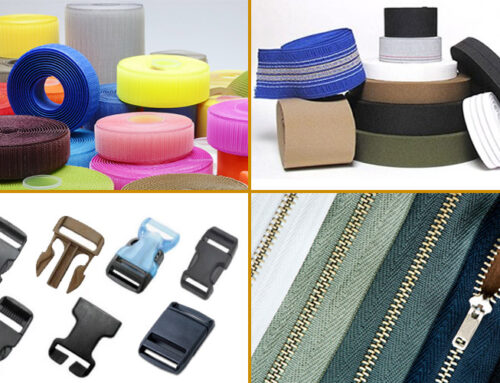Zippers are Big Business
According to reports by Research and Markets, the global market for zippers is enormous and growing at a healthy rate.

The Growth of Zipper Sales:
- $1.6 billion in 2000
- $11 billion in 2019
- 17.7 billion in 2022
- Zipper Sales are projected to be over $23 billion by 2030
In the US alone Zippers sales were estimated at $4.8 billion in year 2022!
Most people take zippers for granted. But ask yourself…what would you do without zippers for your pants, coats, luggage, backpacks, etc? Yes, we all hate a zipper that fails don’t we? But when a zippers works we don’t give them the love they deserve! In this up and down world of zippers we should try to appreciate them for all the good they do… so read on and thank goodness for zippers! In this article we’re going to unzip some facts and share some fascinating facts about the zippers that many might not know and will surprise you. So don’t complain… keep your mouth zipped. Its time to sit back and learn!
A Short History of Zippers
John Howard Company is a leading supplier of zippers and zipper chain for product manufactures in the USA. Our zippers can be found in a wide range of products including: backpacks, apparel, camping gear, military equipment, clothing, furniture, sports gear, outdoor equipment and more. Because we sell so many zippers and zipper chain we thought it would be nice to put together a factual information article on zippers.
The history of zippers dates back to the late 19th century, with the invention of the “clasp locker” by Whitcomb Judson in 1893. (Question: how many Whitcombs do you know?) This early version of the zipper consisted of a series of hooks and eyes, and was primarily used for shoes and was largely considered a dud.
However, it was Swedish-American engineer Gideon Sundback who is credited with developing the modern zipper as we know it today. Sundback patented his “separable fastener” in 1917, which used interlocking teeth instead of hooks and eyes. Gideon’s design was a great improvement over the earlier “clasp locker” design. This new type of fastener was much more reliable and easy to use.

THE ZIPPER NAME CHANGES – DID YOU KNOW?
Initially, the original zipper name was the “clasp locker”. With the next iteration it was called the separable fastener. Finally, the innovative B. F. Goodrich Company jumped into the zipper naming fray when they built zippers into their rubber galoshes. (Because who wants to button up rubber boots?) Unimpressed by the name “separable fastener” they renamed it as the “zipper”. Which was and still is a fantastic name from a marketing perspective! Zippers grew in popularity, and by the 1930s, zippers were being used in a variety of products, including luggage, sporting goods, and even automobiles.
1935 gave birth to “The Battle of the Fly”. This was when a French fashion whiz came out with the concept of putting zippers onto the front of men’s pants. Button fans around the world rue that day. Thus…button manufacturers were soundly defeated and had their buttons handed to them when zippers found their way onto men’s pant. Indeed…Zippers came, saw and conquered.

And zippers marched onward…
A money belt with a zipper became an instant success among WWI U.S. sailors, whose uniforms did NOT have pockets. Almost all initial zipper sales were for the money belts! (Thanks to JSTOR Daily for this little known factoid.)
The military adopted zippers quickly and by World War II, zippers were widely used in military uniforms and equipment, further increasing their popularity and availability. Leather bomber jackets sported sharp looking zippers and America fell in love with those bomber jackets! After the war, zippers became even more ubiquitous, as mass production techniques allowed for cheaper and more efficient manufacturing of zippers.
Today, zippers are an integral part of many products, from clothing and bags to furniture and industrial equipment. And yes…the military still uses plenty of zippers on all kinds of berry compliant gear and equipment.
Zippers have certainly come a long way since the early days of Whitcomb and Gideon. Today, with improvements in technology, materials, design, and manufacturing techniques manufacturers are making them more reliable, durable, and versatile than ever before.

Who Invented the first Plastic Zipper?
Who was the genius that invented the first plastic zipper? Yes… you guessed it! Our old friend…Swedish-American inventor Gideon Sundback, who (in case you forgot already) had also invented the modern metal zipper in 1913. Sundback was way ahead of his time on this idea. His new plastic zipper was called the “Spiral Plastic Zipper” and it used interlocking plastic teeth on a nylon or polyester tape instead of metal teeth on a cotton or silk tape. Perhaps Gideon was getting complaints about rusting zippers so he shut those folks up in one brilliant move!
During World War II, zippers were widely used in military uniforms and equipment, further increasing their popularity and availability. After the war, they became even more ubiquitous, as mass production techniques allowed for cheaper and more efficient manufacturing of zippers.
Today, zippers are an integral part of many products, from clothing and bags to furniture and industrial equipment. They have come a long way since their early days, with improvements in materials, design, and manufacturing techniques making them more reliable, durable, and versatile than ever before.
When is National Zipper Day?
Thanks to our hard working politicians who seem to forever find nothing better to do (besides raising our taxes) – after years of debate they came up with “National Zipper Day”. Perhaps the best day of the year? April 29, 1913 it is! This is day we should all wear something which zips AND which commemorates the hallowed date back in 1913, when Gideon Sundback patented the modern zipper.
PS. The lowly and left out button lovers perhaps are wondering…is there a day for us too? Yes! Your politicians are working hard for you again! There is also a National Button Day which is November 16th.
Who are Leading Suppliers of Zippers in the USA?
Glad you asked! If you’re a product manufacturer in need of loads of zippers or zipper chain, John Howard Company is the company you need to contact! We invite you to talk to our zipper experts and see how we can help you get the right zippers for your products today!
What is the difference between zipper chain and zippers?
Zipper chain and zippers are two related but distinct components of a zipper.
The zipper chain refers to the continuous row of interlocking teeth that make up the main body of the zipper. The chain is typically made from metal or plastic and is designed to be flexible enough to move smoothly along the length of the zipper when opened or closed. The chain is often sold in rolls or by the yard, and can be cut to the desired length to create zippers of various sizes and styles.
A zipper, on the other hand, refers to a complete zipper assembly, which consists of the chain, the slider, and any other components, such as stops or pulls, that are required for the zipper to function properly. The slider is the part of the zipper that moves up and down the chain to open and close the zipper. It is typically made from metal or plastic and is designed to fit snugly over the teeth of the chain, allowing it to move smoothly and securely.
In summary, zipper chain is the continuous row of interlocking teeth that make up the main body of the zipper, while a zipper refers to a complete assembly that includes the chain, slider, and any other necessary components. The chain is a crucial part of the zipper, but it cannot function properly without the other components that make up the complete assembly.
Here at John Howard Company we specialize in supplying plastic or nylon zippers to manufacturers because they are low cost, are very flexible and don’t rust or corrode.

How are Zippers Made?
The process of making a zipper involves several steps, including the production of the teeth or coils, the tape or fabric that holds the teeth together, and the sliders or pulls that move the teeth to open and close the zipper. Here is a general overview of the manufacturing process:
- Teeth or Coils Production: The first step is the production of the teeth or coils, which are usually made of metal, plastic or nylon. Metal teeth are usually made of brass or aluminum, and are produced by stamping or cutting the teeth from a metal strip. Plastic or nylon teeth are made by injection molding, where the molten plastic or nylon is forced into a mold to form the teeth.
- Tape or Fabric Production: The tape or fabric that holds the teeth together is typically made of polyester, cotton, or a blend of both. The tape is produced on a weaving machine and is usually dyed to the desired color.
- Attaching Teeth to Tape: Once the teeth and tape are produced, the teeth are attached to the tape using a process called chain stitching. In this process, a needle and thread are used to sew the teeth onto the tape in a continuous chain.
- Sliders or Pulls Production: The sliders or pulls are the part of the zipper that moves the teeth to open and close the zipper. Sliders are usually made of metal or plastic and are produced by stamping or molding.
- Final Assembly: The final step involves attaching the sliders to the tape, which is done using a machine that clamps the slider onto the chain of teeth. The ends of the tape are then folded over and sewn to prevent fraying.
Once the zippers are completed, they are typically inspected for quality and packaged for shipment to manufacturers of clothing, accessories, and other products.
Watch How a Zipper is Made
The Coil Zipper – King of Zippers
According to industry reports and market research, the most commonly used type of zipper is the coil zipper, also known as a nylon zipper or a plastic zipper. John Howard Company is a leading supplier of plastic coil zippers and nylon zippers for product manufacturers. These zippers do not rust or corrode and are extremely durable and used in products such as luggage and military vests or backpacks.
Coil zippers are lightweight and flexible, making them suitable for use in a wide range of applications, from apparel and accessories to luggage and outdoor gear. They are also affordable and widely available, making them a popular choice among manufacturers and consumers alike.
In addition to coil zippers, other types of zippers that are commonly used include metal zippers, which are more durable and have a more substantial feel, and invisible zippers, which are designed to be hidden within a seam for a clean, streamlined look. However, these types of zippers tend to be less commonly used than coil zippers.

How are zippers used in military gear?
Zippers are used in a wide range of military gear, including clothing, bags, and equipment. Some examples of military gear that commonly feature zippers include:
- Uniforms: Many military uniforms feature zippers on the front, pockets, and sleeves.
- Backpacks and duffel bags: Zippers are often used on military bags to allow for easy access to gear and supplies.
- Body armor: Zippers are used on some types of body armor to allow for easy donning and doffing.
- Tents and sleeping bags: Many military tents and sleeping bags feature zippers to allow for easy access and ventilation.
- Protective suits: Some types of military protective suits, such as hazmat suits, feature zippers to allow for easy entry and exit.
Overall, zippers are a common feature in many types of military gear due to their convenience, durability, and ease of use.

View Zippers in Art and Architecture
Zipper Building in Milan, Italy
https://www.stirworld.com/see-features-alex-chinneck-unzips-the-fa-ccedil-ade-of-a-building-at-the-milan-design-week
Zipper Building in Seoul, South Korea – Central Post Office
http://www.fargos.net/GCCtravel/regionMaps/South_Korea/imageAndMap_D7514261.html
Zipper Book: Mad About Zippers by Mary McCarthy
A book by an expert seamstress all about how to integrate zippers into garments.
https://www.marymccarthysews.com/books/mad-about-zippers
Zipper Chain Cut to Size
If you have hundreds of products that need zipper chain cut to size we can help!
Learn More about our Cutting Services




